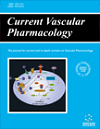
Full text loading...
We use cookies to track usage and preferences.I Understand

Current guidelines and consensus statements advise caution in using direct oral anticoagulants (DOACs) for morbidly obese patients with body mass index (BMI) >40 kg/m2, indicating warfarin as the most studied treatment.
We systematically searched databases from their inception to January 4, 2024, to identify studies that evaluated the effectiveness and safety of DOACs compared to warfarin in patients with BMI >40 kg/m2 and atrial fibrillation (AF) or venous thromboembolism (VTE). The outcomes of all-cause mortality, major and minor bleeding, stroke/systematic embolism (SE), VTE, and their composite endpoint were analyzed using a random-effects model.
This meta-analysis included 24 studies and 119,960 morbidly obese patients with AF or VTE on oral anticoagulation therapy: 51,363 on DOACs (43%) vs. (57%) 68,597 on warfarin. DOAC use was significantly associated with lower all-cause mortality and major bleeding risk compared to warfarin. Although the risk of composite endpoint, stroke/SE, and VTE was lower in the DOAC group, no statistically significant difference was observed, indicating no superiority of warfarin compared to DOAC use. The risk of minor bleeding events, hemorrhagic stroke, and ischemic stroke was lower in the DOAC compared to the warfarin group. The same trend favoring DOACs over warfarin in all assessed endpoints was observed in the subgroup analysis based on anticoagulation indication (AF or VTE).
Our findings have documented a potentially more effective and safer profile of DOACs compared to warfarin in morbidly obese patients regardless of the indication for anticoagulation.

Article metrics loading...

Full text loading...
References


Data & Media loading...
Supplements